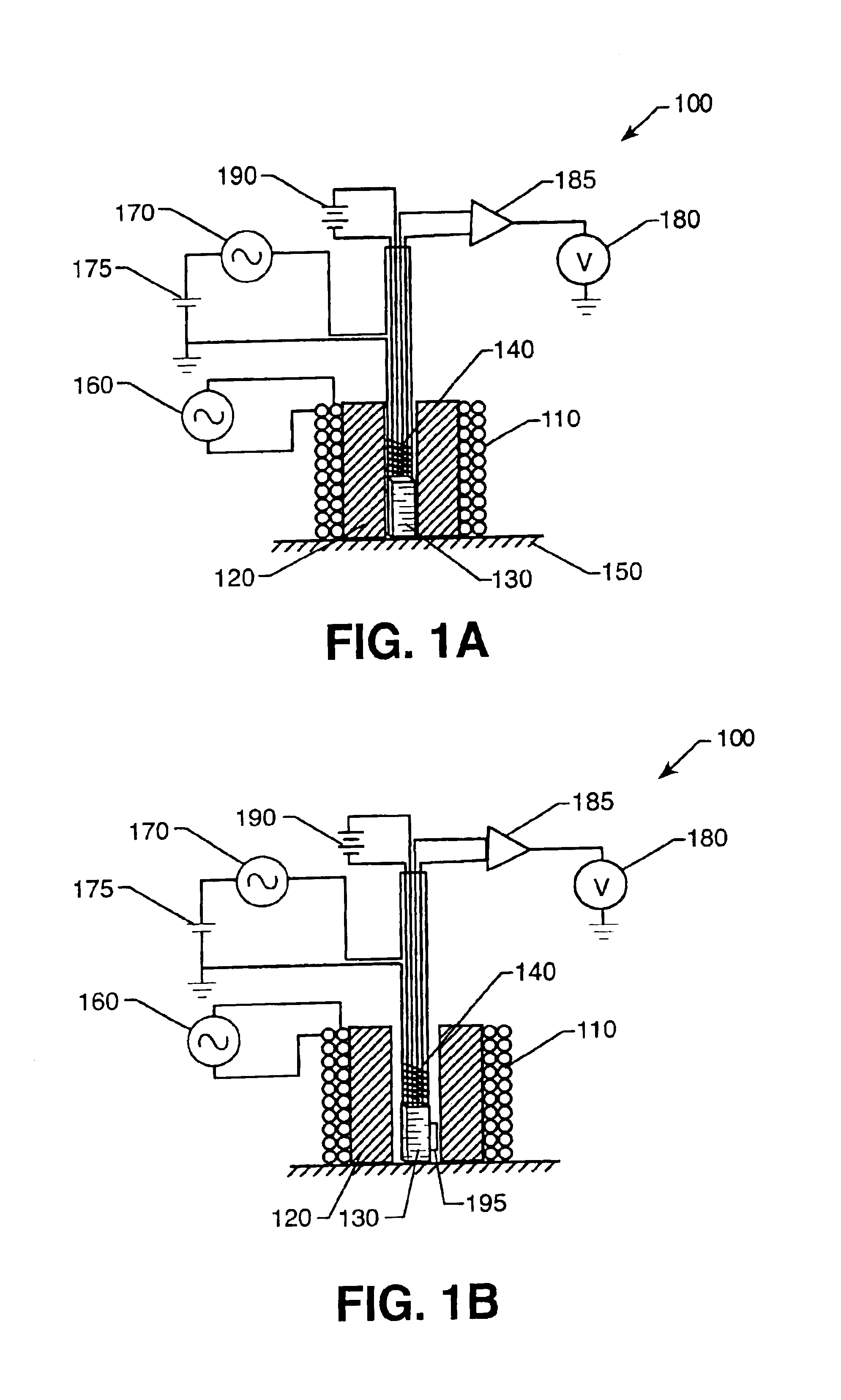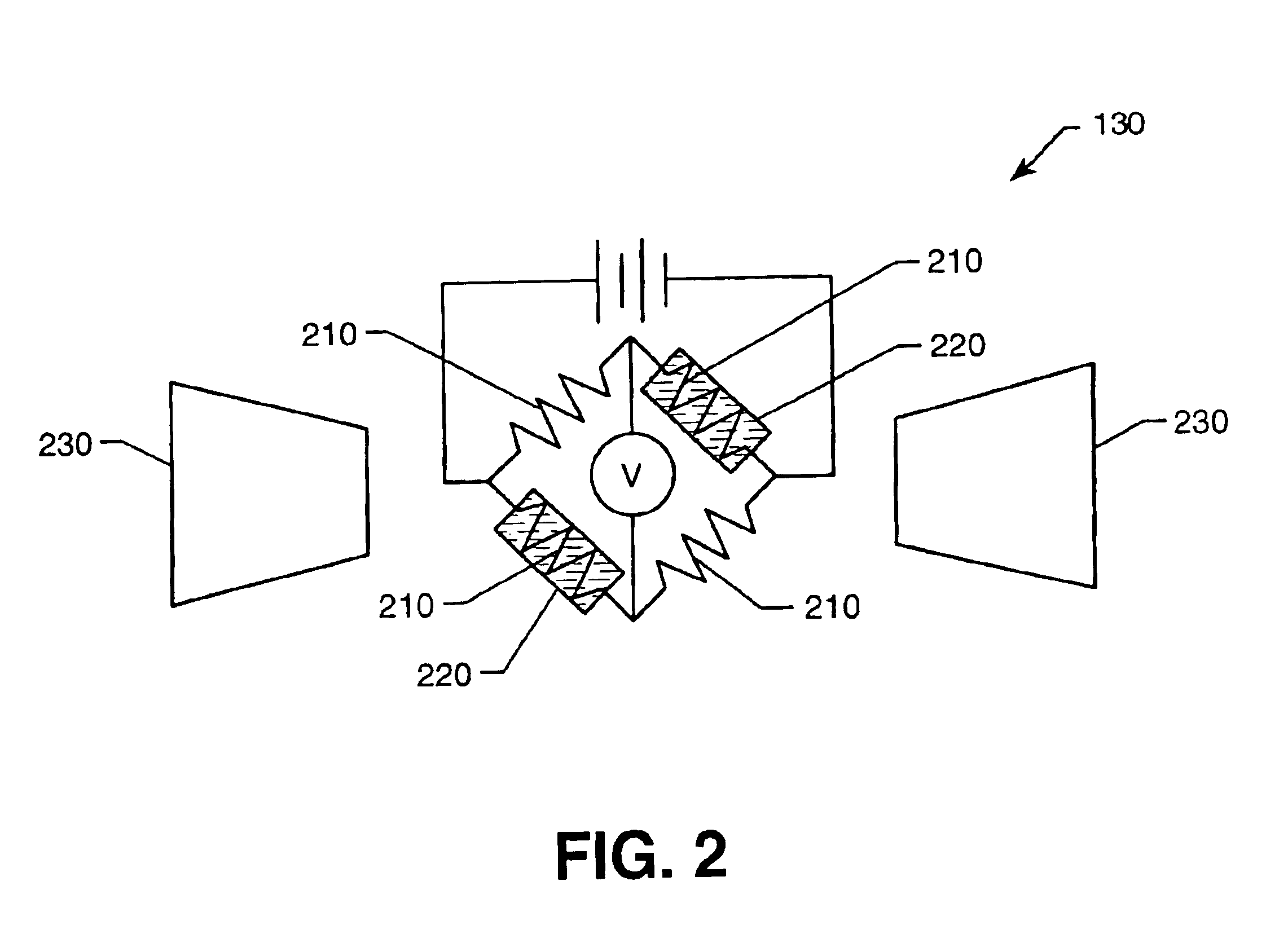Magnetoresistive flux focusing eddy current flaw detection
a magnetic field and focusing technology, applied in the direction of magnetic properties, instruments, material magnetic variables, etc., can solve the problems of airframe wings, detection of deeply buried flaws at airframe fasteners, and serious problems in the application of ultrasonic inspection methods, so as to achieve effective detection of deep flaws in thick multilayer conductive materials, high magnetic field sensitivity, and high flux density
- Summary
- Abstract
- Description
- Claims
- Application Information
AI Technical Summary
Benefits of technology
Problems solved by technology
Method used
Image
Examples
Embodiment Construction
[0049]With reference now to FIG. 1A, wherein like numbers designate like components throughout all the several figures, the GMR sensor-based flux focusing eddy current probe of the present invention is particularly well adapted for non-destructive evaluation of electrically conductive thick materials having multiple layers and deep cracks. Although particularly useful for such detection, it may also be used effectively for closer-surface flaw detection. The probe generally designated at 100 includes an excitation (drive) coil 110, a flux focusing lens 120, a giant magnetoresistive (GMR) sensor 130, and a feedback coil 140. The probe 100 applies the eddy current principle to evaluate electrically conductive material 150 for faults. An alternating current supplied by a current source 160 electrically connected to the excitation coil 110 produces eddy currents within conductive material 150 placed in proximity with the probe 100. Voltage 190 is supplied to the GMR sensor 130. Magnetic ...
PUM
| Property | Measurement | Unit |
|---|---|---|
| thick | aaaaa | aaaaa |
| thick | aaaaa | aaaaa |
| frequency | aaaaa | aaaaa |
Abstract
Description
Claims
Application Information
 Login to View More
Login to View More - R&D
- Intellectual Property
- Life Sciences
- Materials
- Tech Scout
- Unparalleled Data Quality
- Higher Quality Content
- 60% Fewer Hallucinations
Browse by: Latest US Patents, China's latest patents, Technical Efficacy Thesaurus, Application Domain, Technology Topic, Popular Technical Reports.
© 2025 PatSnap. All rights reserved.Legal|Privacy policy|Modern Slavery Act Transparency Statement|Sitemap|About US| Contact US: help@patsnap.com



